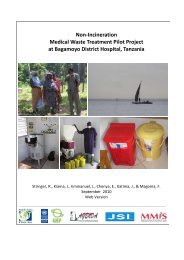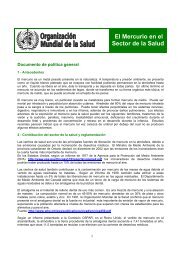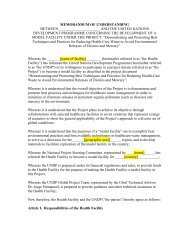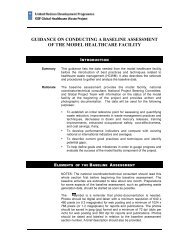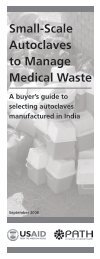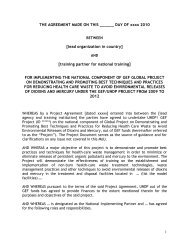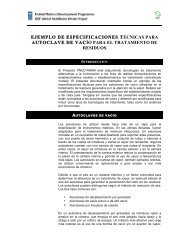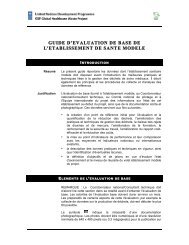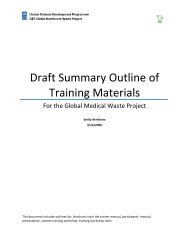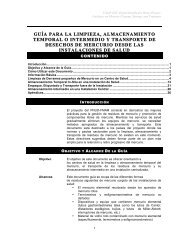Latvia
Latvia
Latvia
You also want an ePaper? Increase the reach of your titles
YUMPU automatically turns print PDFs into web optimized ePapers that Google loves.
Health systems in transition<br />
<strong>Latvia</strong><br />
•<br />
•<br />
practice allowance;<br />
indicator scale-dependent allowances for:<br />
o number of chronically ill patient visits<br />
o density of the population in the catchment area<br />
o distance from practice to emergency post<br />
o number of children on the register list.<br />
Resource allocation for secondary-level ambulatory care and GP fund<br />
holding<br />
According to government regulations, funding for secondary-level ambulatory<br />
care is split in two major parts in terms of planning and allocation. The first<br />
part is calculated for each GP practice according to the number of registered<br />
patients, amounting to €1 per patient per month, which is a form of fund holding.<br />
The second part applies to more costly procedures and is allocated directly<br />
to ambulatory care providers (e.g. health centres, outpatient departments,<br />
polyclinics, specialist consultants) through contract negotiations. These are<br />
based on tariffs for specialist consultant episodes and a procedure tariff list.<br />
The target recipients of the GP-controlled funds are secondary-level<br />
ambulatory care providers, as mentioned above, to whom patients are directly<br />
referred by GPs. The secondary-level ambulatory care providers earn their<br />
income according to tariffs of specialist consultant episodes and a procedure<br />
tariff list. The tariff list contains predominantly simple and non-costly<br />
procedures.<br />
Up to the end of 2006, GPs were allowed to keep 75% of the unused funds,<br />
after assessment of the GP practice’s operational indicators. This seems to<br />
promote inappropriate incentives for GPs with regard to underreferring patients<br />
to specialist services (Stuburs 2007 [unpublished data]).<br />
Since 2007, GPs are permitted to keep unused money for secondary care<br />
only up to a maximum of 30% of the funds for secondary care (GP-controlled<br />
fund). If the quarterly unused portion is equal to or less than 30% of the GPcontrolled<br />
fund for the quarter, the SCHIA pays out 75% of this remainder<br />
to the respective GP. If the quarterly remainder in the fund is above 30%, the<br />
SCHIA must make an assessment on whether the low spending on specialist<br />
consultations and diagnostic tests is appropriate to the needs of patients. As there<br />
is no further detailed methodology within the relevant government regulation<br />
regarding what criteria the assessment should include, the SCHIA has considered<br />
that GPs’ comparative activity indicators (such as the number of self-performed<br />
procedures and very high patient appointment rates) can be the indicators for<br />
GPs to qualify for the bonus payments from the fund.<br />
101





